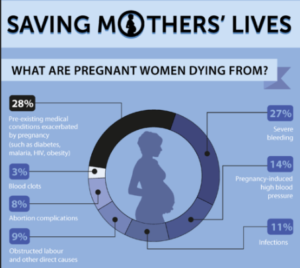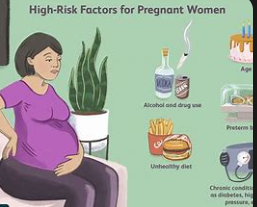In a recent study that examined nearly 24,000 expectant mothers in India, it was found that a shocking 49.4% of pregnancies fell into the high-risk category. Of these, about a third had one high-risk factor, while 16% were grappling with multiple risks. The northeastern states of Meghalaya, Manipur, Mizoram, and the southern state of Telangana bore the brunt of high-risk pregnancies. On the other hand, Sikkim, Odisha, and Chhattisgarh reported the lowest rates.
A group of dedicated researchers from the National Institute for Research in Reproductive and Child Health in Mumbai, which is part of the Indian Council of Medical Research (ICMR), conducted a study reported on February 17, 2024. They looked at the health data of about 24,000 pregnant women across India. What they found was quite concerning – almost half of these pregnancies were considered high-risk.

Interestingly, the study found that high-risk factors were more commonly seen during the third trimester (51%) than in the first (48.8%) and second trimester (48.6%). This suggests that many of these risks may not be immediately apparent at the beginning of the pregnancy, emphasizing the importance of ongoing prenatal care throughout the entire pregnancy.
Education and High-Risk Pregnancies
The study also revealed a worrying trend – the proportion of multiple high-risk factors was higher among women with no education (22.5%) compared to educated women. This underscores the critical role of education in empowering women to make informed
Spectrum of High-Risk Factors
The study identified several high-risk factors. These included short birth spacing (less than 18 months), adverse birth outcomes such as miscarriage, abortion, or stillbirth, and a history of cesarean section deliveries. Maternal risk factors spanned across age (adolescent women aged 15 to 17 years and women older than 35 years), short stature (height below 140 cm), and a higher body mass index of over 30. Weight gains of 7-11 kg for overweight women and 5-9 kg for obese women during pregnancy were also flagged as high-risk.
Lifestyle risk factors such as tobacco use and alcohol consumption were noted. Women with more than five children, those with short birth spacing, and long birth intervals of over 59 months were also at risk. Women with a history of preterm deliveries, miscarriages, abortions, or stillbirths were categorized under previous birth outcome risk factors.
Geographical Disparities in Risk Factors
The study also shed light on the geographical disparities in risk factors. For instance, Tripura had the highest rate of adolescent pregnancies, while Ladakh had the highest number of women over 35 years. Puducherry had the highest rate of short stature, and Goa had the highest rate of women with a BMI over 30. Meghalaya had the highest number of women with more than five children, while Andhra Pradesh had the highest rate of short birth spacing of less than 18 months. Ladakh and Puducherry had the highest rate of cesarean deliveries, and Chandigarh had the highest rate of adverse birth outcomes and preterm births.
High-risk pregnancies have far-reaching implications. They not only affect the health of the mother but also have a profound impact on the entire family unit. The risk of maternal mortality is higher, and the child is also at risk of being born preterm or with low birth weight. These factors can have long-term implications for the child’s health and development.
Call for Holistic Strategies
The study underscores the urgent need to address the issue of high-risk pregnancies in India. It advocates for comprehensive strategies that not only focus on medical interventions but also address socio-economic factors that contribute to high-risk pregnancies. The ultimate goal is to ensure safer pregnancies and healthier futures for women and children across the country. This includes not only medical interventions but also socio-economic factors that contribute to high-risk pregnancies. The goal is to ensure safer pregnancies and healthier futures for women and children across the country.











